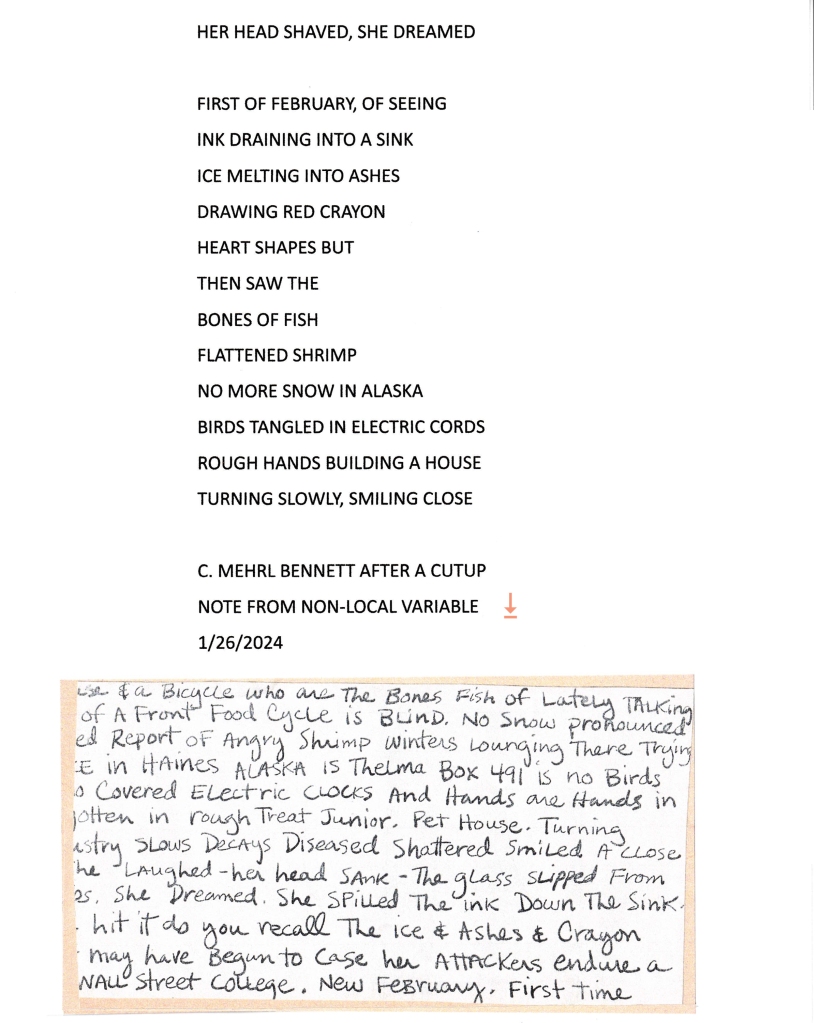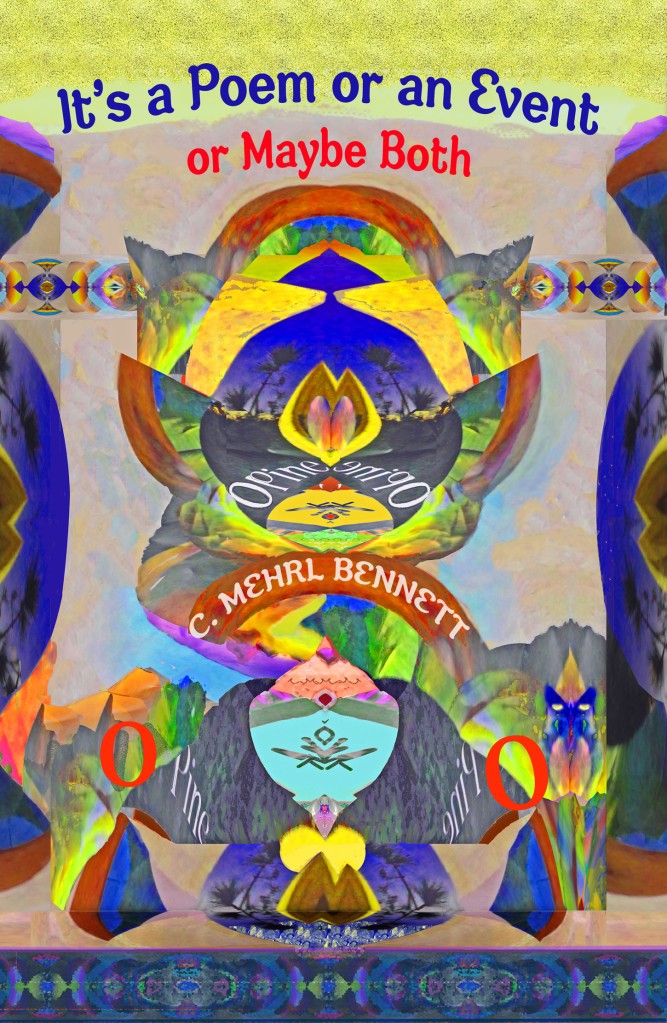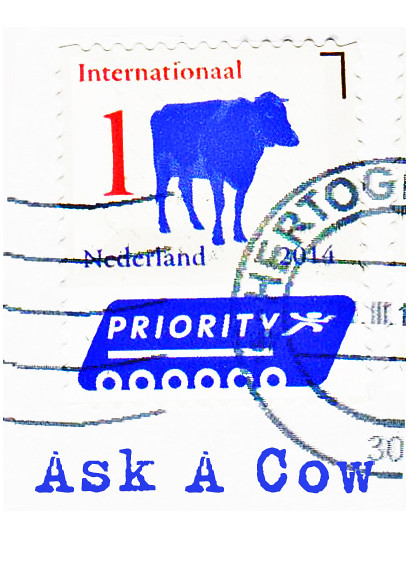The Viewpoints Method, for CCC Writing Workshop – CMB 2023
I was invited to a workshop by Claire Elizabeth Barratt aka CillaVee, director of The Center for Connections + Collaboration (CCC) in Asheville NC, which happened physically in Ashland NC at between 10:00 am and 4:00 pm. Claire is familiar with Mary Overlie. Her writer father, David Barratt, introduced the aims of the day’s workshop and closed the day out with a summary.
The Viewpoints Method is something I first came across via the internet as an idea for writers. Upon further searching I learned that it was developed in the 70’s by dance choreographer Mary Overlie. Anne Bogart later developed it as a method to create staging for actors and wrote a book with Tina Landau titled The Viewpoints Book, pub. 2004 by Theatre Communications Group. Today it is generally known as a post-modern training method for actors. As Claire is a dancer, she is familiar with Mary Overlie’s work.
Anne Bogart had worked with Japanese director, Tadashi Suzuki, to found the SITI dance company in 1992, so there is an Eastern culture connection. The Viewpoints Method reminds me of the influence of Eastern philosophies reaching the West by way of Zen philosophy and Buddhism in the 1960’s and ‘70s. Today in the West, the Eastern Zen influence is common with yoga devotees, particularly with meditation & in today’s buzz word, “Mindfulness” — an inner awareness of the HERE & NOW. We can also find balance by being open to contradictory viewpoints such as the Yin and the Yang, and in what today is called a person’s effort to be “authentic”. As part of the Boomer generation, we used to call it “finding oneself”.
Yet, we need to loosen the grip on the egocentric version of Self so that writing becomes more experimental and ‘thought” centered. It’s not important to find a single approach to writing style, then stay with that so that your ‘readers’ or the people you want to publish your work will recognize & feel comfortable with what you write. Let’s agree on this right at the outset. Whatever material a writer first comes up with must be open to the editing process. What happens in the editing process is where the real work & play happens. The ‘self’ doesn’t come back into it until a signature is added to the finished work, yet our ego is always present… I believe that it is helpful to identify ourselves as writer, poet, or artist. To sustain us in a world where the liberal arts & humanities are considered unpractical or self-indulgent, or for retired people, or as a left-wing hobby, self-identification as an artist and/or writer gives a boost to our ego. It’s not easy being YOU, but it’s the only YOU you’ve got.
What comes of finding our ‘authentic’ selves?
It leads to confidence in making choices. We can break through ‘writer’s block’ and take those first shaky steps to construct our art. As we keep going, we start to trust in our intuition and spontaneity. We enjoy editing when, through our edits, we uncover even more of ourselves and more of the world around us as well. We delve into our subconscious and at the same time expose the wholeness of our universe. Writing can be a balancing act between the two.
What do we mean by ‘experimental’ or ‘avant garde’ writing?
Making room for accidents, being open to contradictions during the thought process, and being open to fresh ideas so that an interesting narrative with sights and sounds that touch all the senses will evolve. We may focus on small sections of a narrative but hopefully, at the same time, we develop a arc for the work as a whole. “Experimental” can involve creating unique structural rules for a single piece, yet we’re free to break our rules at any point for the sake of our art, as there are no rules in art.
It might seem to readers as if the writer invents, constructs, and creates in a VOID but in truth, we are all part of a WHOLENESS or ONE CONSCIOUSNESS… and here we connect again with ZEN philosophy, which was also a place from which Fluxus philosophy seems to have developed. Much of my own art and writing since around 2009 has been influenced by Fluxus.
Here is my 2023 fluxus event score titled “How to Write a Poem”:
- Sit down.
- Wait.
- Write something.
- Edit.
- Sign your name.
We read, question, and investigate our cultural influences which are always in flux. At the same time, our inner mind is in flux. The wheels are turning.
A writer friend of ours, Jim Leftwich, wrote a blurb for John M, Bennett’s book, LAVANDERĺA NOMBRE. Jim said, “Are Bennett poems always primarily about reading, in the sense that reading is often if not always primarily about thinking?” I’m not sure that Jim is specifically saying that “reading is thinking”, but a blurring between the two separate processes is an interesting viewpoint.
Another viewpoint of the postmodern sort is the idea of FLARF. On the surface, some people dismiss FLARF as ‘nothing’ or of insignificant value as a writing methodology. An example of FLARF is to surf the internet for surprising textual content & reprocess it until further computer glitches afford even more exaggerations or new lines of thought to follow. We can use Google Translator to change text from one language to another & again to more languages then back to English. All those fresh ideas generated by the FLARF method or through surprising ‘glitches’ is all still ‘thinking’ concealed by PLAY. Our own thoughts surface with choices we make as we use playful editing of text sourced from others or from ourselves. Wm. Burroughs came upon the ‘cut up’ method to create something new through his friend Brion Gysin. Take a source text & cut it into four pieces, then re-arrange the placement of those sections OR simply use each smaller section to develop further thoughtful texts. After doing this a few times, your editing process will open up enough that you can discard the physical process of cutup, and just let it happen in your own mind.
After tearing up a poem I originally titled “THE PINK CLOUD” into four parts, I used it as source material for a new eight stanza poem. Each stanza also forms a word using the first letters of each line, using the acrostic method.
Speaking of source materials, consider junk mail letters from politicians and other organizations begging for donations to a cause. Many appear as if they’ve been composed by artificial intelligence (AI). Input a few ideas about the cause and why donations are important, and AI can generate multiple different paragraphs which basically state the same thing over and over. Do they think that if they say it enough times that it will seem more genuine and real? I’ve also used source text found inside dark chocolate bar wrappers with Victorian poetry. Even when I restrict myself to sources like these, which often lack authentic ‘content’ in the flowery language used for poetry at that time, I can find my own content using the BLACK-OUT method of writing (also called ERASURE poetry). This method was used in 1972 by the Englishman, Tom Philips, as he blacked out parts of the text in the 1892 Victorian romance novel titled “A Human Document”. Philips continued to work on the same source for 50 years, then titled the completed book project as “The Humament”. His influences, and mine as well, were John Cage, William Burroughs, Dada, and the concrete poets.
A blog about my book, It’s a Poem or an Event or Maybe Both, and more can be found at my website: cmehrlbennett.wordpress.com In the poem, Sake (p.110 of my book), the first stanza is from an erasure I made on an Elizabeth Barrett Browning sonnet. Another poem, Cat in the Hat and Captain Rat, came from an erasure I made on a fund raising letter from President Joe Biden.
Find more examples of erasure poetry/writing by Nonlocal Variable (a Portland Oregon mail artist) at https://nonlocalvariable.art/noncurrent/#nonbooklets
The final poem I present here was created from a cut-up note included in a mailart envelope received this month from Nonlocal Variable. I will include an image of that note at the end.


























